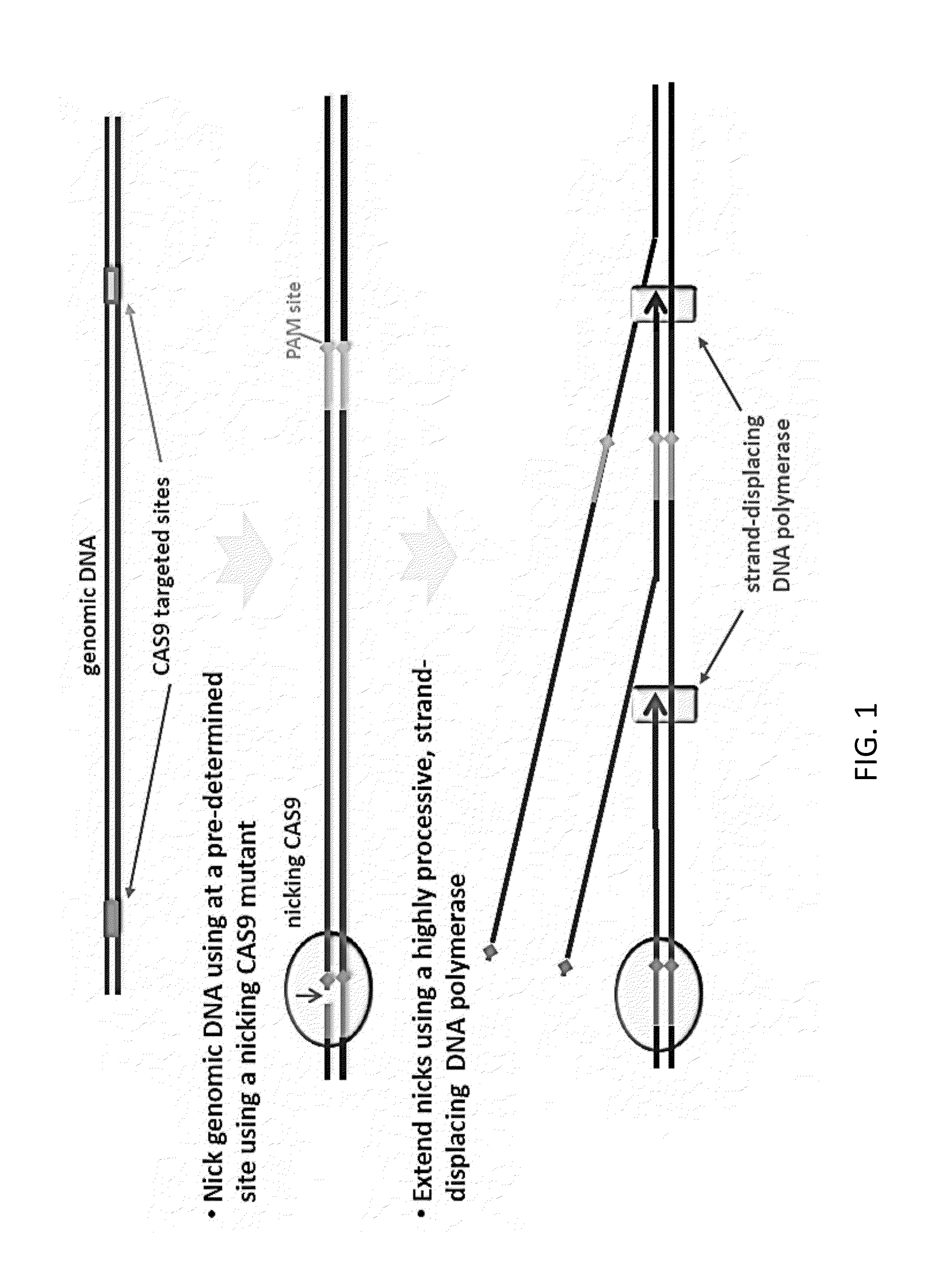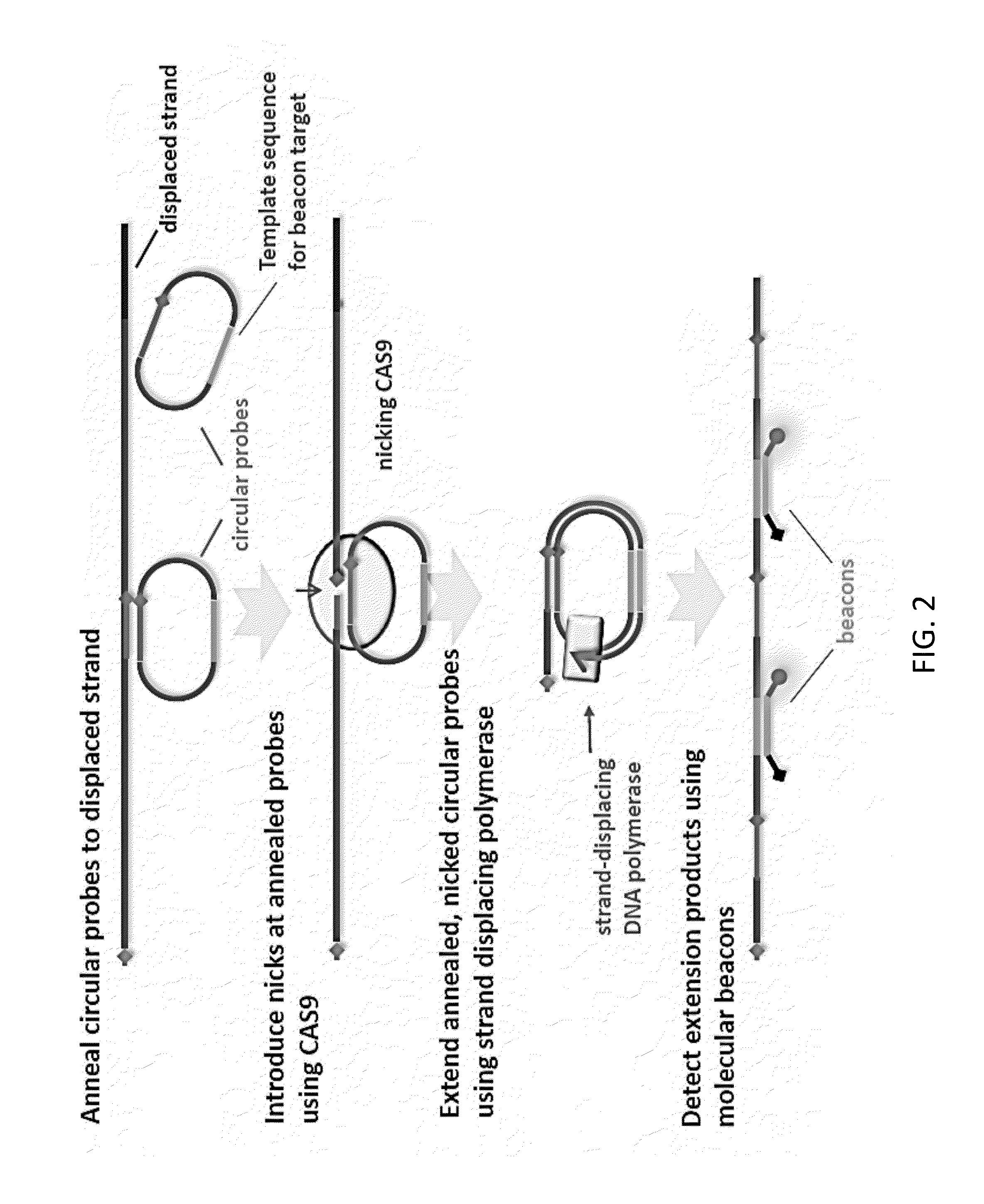CAS9-based Isothermal Method of Detection of Specific DNA Sequence
a dna sequence and isothermal technology, applied in the field of molecular biology, can solve the problems of limited pcr sequence size, and time-consuming entire pcr reaction
- Summary
- Abstract
- Description
- Claims
- Application Information
AI Technical Summary
Benefits of technology
Problems solved by technology
Method used
Image
Examples
Embodiment Construction
[0025]This invention is based, at least in part, on an unexpected discovery that the CRISPR / CAS nucleic acid targeting system in connection with a strand displacing DNA polymerase can be used in isothermal amplification and allows one to overcome the low specificity limitation in conventional isothermal amplification techniques.
[0026]Various conventional isothermal nucleic acid amplification techniques are known in the art. Examples include nicking and extension amplification reaction (NEAR), recombinase polymerase amplification (RPA), isothermal and chimeric primer-initiated amplification of nucleic acids (ICAN), transcription-mediated amplification (TMA), nucleic acid sequence-based amplification (NASBA), signal-mediated amplification of RNA technology (SMART), strand-displacement amplification (SDA), rolling circle amplification (RCAT), ligase amplification reaction, loop-mediated isothermal amplification of DNA (LAMP), isothermal multiple displacement amplification, helicase-dep...
PUM
| Property | Measurement | Unit |
|---|---|---|
| temperature | aaaaa | aaaaa |
| temperatures | aaaaa | aaaaa |
| Tm | aaaaa | aaaaa |
Abstract
Description
Claims
Application Information
 Login to View More
Login to View More - R&D
- Intellectual Property
- Life Sciences
- Materials
- Tech Scout
- Unparalleled Data Quality
- Higher Quality Content
- 60% Fewer Hallucinations
Browse by: Latest US Patents, China's latest patents, Technical Efficacy Thesaurus, Application Domain, Technology Topic, Popular Technical Reports.
© 2025 PatSnap. All rights reserved.Legal|Privacy policy|Modern Slavery Act Transparency Statement|Sitemap|About US| Contact US: help@patsnap.com


